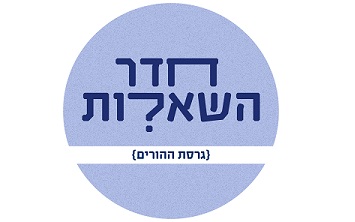תוכן עניינים:
תקציר 7
הקדמה 25
חלק א. החברה הדתית-לאומית: מיפוי דמוגרפי 29
פרק 1. שיעור החברה הדתית-לאומית מהציבור היהודי בישראל 30
מבוא ומתודולוגיה 30
1.1. נתוני הלמ"ס 30
1.2. מחקרים נוספים 34
סיכום ודיון 37
פרק 2. שיעור החילון ועזיבת הדת 38
מבוא ומתודולוגיה 38
2.1. מחקרים היסטוריים 38
2.2. נתוני הסקר החברתי ומכון פיו 39
2.2.1. הממצאים המרכזיים 39
2.2.2. פילוח לפי גיל 44
2.2.3. הגדרת המסורתיות 47
2.3. סקרים ומחקרים נוספים 52
2.4 נתונים חדשים: מאפייני חילון בקרב בוגרי חמ"ד 57
2.5. לאיזה פיקוח שולחים בוגרי החמ"ד את ילדיהם? 65
2.6. פילוח לפי מגדר 68
סיכום ודיון 71
חלק ב. החינוך הממלכתי-דתי 71
פרק 3. החינוך הממלכתי-דתי: נתונים כלליים 72
מבוא ומתודולוגיה 72
3.1. היקף התלמידים בחינוך הממלכתי-דתי 72
3.2. מאפייני התלמידים 75
3.2.1. הגדרה דתית של ההורים 75
3.2.2. רקע חברתי-כלכלי 76
3.2.3. תלמידים עולים 78
3.3. גודל המוסדות 80
3.4. בעלות על מוסדות 82
3.5. תקצוב לתלמיד 84
סיכום ודיון 88
פרק 4. הישגים לימודיים 88
מבוא ומתודולוגיה 88
4.1. נתונים כלליים 94
4.1.1. תמונה כללית 95
4.1.2. מגדר 98
4.1.3. רקע חברתי-כלכלי 102
4.1.4. סיכום ודיון: נתונים כלליים 106
4.2. מתמטיקה 106
4.2.1. נתונים כלליים 106
4.2.3. מגדר 113
4.2.3. רקע חברתי-כלכלי 119
4.2.4. סיכום ודיון: מתמטיקה 124
4.3. אנגלית 125
4.3.1. נתונים כלליים 125
4.3.2. מגדר 132
4.3.3. רקע חברתי-כלכלי 136
4.3.4. סיכום ודיון: אנגלית 139
4.4. מדעים 140
4.4.1. נתונים כללים 140
4.4.2. מגדר 148
4.4.3. רקע חברתי-כלכלי 153
4.4.4. סיכום ודיון: מדעים 155
4.5 עברית וקריאה 157
4.5.1. נתונים כללים 157
4.5.2. מגדר 161
4.5.3. רקע חברתי-כלכלי 165
4.5.4. סיכום ודיון: עברית וקריאה 169
4.6. מקצועות נוספים 170
סיכום ודיון 173
פרק 5. אקלים חברתי וסביבה פדגוגית 175
מבוא ומתודולוגיה 175
5.1. שביעות רצון כללית 177
5.2. אלימות ותחושת מוגנות 180
5.3. שימוש בחומרים ממכרים: אלכוהול, סיגריות, נרגילות וסמים 185
5.4. משמעת והתנהגות 191
5.5. סביבה פדגוגית 194
5.6. פעילויות חינוכיות מחוץ לבית הספר 197
סיכום ודיון 199
פרק 6. הפרדה מגדרית בבתי הספר 200
מבוא ומתודולוגיה 200
6.1. הפרדה לפי כיתות 202
6.2. הפרדה לפי בתי ספר 205
6.3. הפרדה מגדרית ורמה חברתית-כלכלית 209
6.4. הפרדה מגדרית והישגים לימודיים 214
6.5. הפרדה מגדרית ואקלים חברתי ופדגוגי 221
סיכום ודיון 225
נספח: תרשימים נוספים 227
חלק ג. לאחר התיכון 231
פרק 7. לימודים במוסדות תורניים 232
מבוא ומתודולוגיה 232
7.1. ישיבות 233
7.1.1. רקע כללי 233
7.1.2. תלמידי ישיבות – נתוני הלמ"ס 234
7.1.3. תלמידי ישיבות: נתוני משרד החינוך 239
7.1.4. תלמידי כולל 241
7.2. מכינות קדם-צבאיות 242
7.3. מדרשות תורניות והסדר נשים 246
7.4. תמונת מבט רוחבית עדכנית 251
סיכום ודיון 253
פרק 8. שירות צבאי ולאומי 254
מבוא ומתודולוגיה 254
8.1. היקפי שירות: צבא ושירות לאומי 256
8.1.1. גברים 256
8.1.2. נשים 258
8.2. מאפייני המתגייסות 261
8.2.1. רקע חברתי-כלכלי 261
8.2.2. מחוז גאוגרפי 264
8.2.3. רשת חינוך 270
8.3. יציאה לקצונה 275
8.3.1. גברים 275
8.3.2. נשים 279
סיכום ודיון 280
חלק ד. השכלה גבוהה ותעסוקה 281
פרק 9. השכלה גבוהה 282
מבוא ומתודולוגיה 282
9.1. לימודים במוסדות ההשכלה הגבוהה 283
9.1.1. נתונים כלליים 283
9.1.2. פילוח לפי סוג מוסד אקדמי 288
9.1.3. פילוח לפי אוניברסיטה 292
9.1.4. נתוני נשירה 296
9.2. תחומי לימוד 297
9.2.1. תואר ראשון 299
9.2.2. תואר שני 303
9.2.3. תואר שלישי 305
סיכום ודיון 308
פרק 10. תעסוקה ושכר 310
מבוא ומתודולוגיה 310
10.1. מאפייני התעסוקה 311
10.1.1. שיעור התעסוקה 311
10.1.2. שיעור העצמאים 312
10.1.3. תחומי התעסוקה: השוואה כללית 314
10.1.4. תחומי תעסוקה: לפי מגדר 320
10.2. שכר 325
10.2.1. נתונים כללים 325
10.2.2. שכר לפי תחום תעסוקה 329
סיכום ודיון 331
נספח: השפעות משבר הקורונה 332
חלק ה. המשפחה הדתית-לאומית 335
פרק 11. נישואין 336
מבוא ומתודולוגיה 336
11.1. נתונים כלליים 337
11.2. נישואין בגיל צעיר ורווקות מאוחרת 342
סיכום ודיון 347
פרק 12. גירושין 348
מבוא ומתודולוגיה 348
12.1. גירושין לפי גיל נישואין 348
12.2. שיעור הגירושין: נתונים כלליים 351
12.3. מגמות לאורך השנים 354
סיכום ודיון 359
פרק 13. ילודה 360
מבוא ומתודולוגיה 360
13.1. היקף ילודה כולל 361
13.2. היקף ילודה לפי גיל 364
סיכום ודיון 370
רשימת מקורות 371
Summary Introduction
Part A: The National-Religious society: Demographic mapping
Introduction and Methodology
1.1 Data from Central Bureau of Statistics (CBS)
1.2 Additional Studies
Summary and discussion
- Rate of secularization and those leaving religion
Introduction and Methodology
2.1 Historical research
2.2 Data of the social survey and Pew Institute
2.2.1 Key findings
2.2.2 Segmentation according to age
2.2.3 Traditional definitions
2.3 Additional surveys and studies
2.4 New data: Characteristics of secularization among graduates of national religious education
2.5 To which track do graduates of national religious education send their children?
2.6 Segmentation by gender
Summary and discussion
Part B: The National-Religious education
- The National-Religious education: general data
Introduction and Methodology
3.1 Range of students in the national-religious education
3.2 Characteristics of students
3.2.1 Religious definition of parents
3.2.2 Socio-economic background
3.2.3 New immigrant students
3.3 Size of institutions
3.4 Ownership of institutions
3.5 Budget per student
Summary and discussion
- Academic achievements
Introduction and methodology
4.1 General data
4.1.1 General picture
4.1.2 Gender
4.1.3 Socio-economic background
4.1.4 Summary and discussion: General data
4.2 Mathematics
4.2.1 General data
4.2.2 Gender
4.2.3 Socio-economic background
4.2.4 Summary and discussion: Mathematics
4.3 English
4.3.1 General data
4.3.2 Gender
4.3.3 Socio-economic background
4.3.4 Summary and discussion: English
4.4 Sciences
4.4.1 General data
4.4.2 Gender
4.4.3 Socio-economic background
4.4.4 Summary and discussion: sciences
4.5 Hebrew and reading
4.5.1 General data
4.5.2 Gender
4.5.3 Socio-economic background
4.5.4 Summary and discussion: Hebrew and reading
4.6 Additional subjects
Summary and discussion
- Social Climate and Pedagogic environment
Introduction and methodology
5.1 General satisfaction
5.2. Violence and feeling of protection
5.3 Use of addictive substances: alcohol, cigarettes, nargillas and drugs
5.4 Significance and behaviour
5.5 Pedagogic environment
5.6 Educational activities outside school
Summary and discussion
- Gender separation in schools
Introduction and methodology
6.1 Separation according to classes
6.2 Separation according to schools
6.3 Separation according to gender and socio-economic level
6.4 Gender separation and academic achievements
6.5 Gender separation and social and pedagogic climate
Summary and discussion
Appendix: Additional Charts
Part C: After High School
- Study in Torah Institutions
Introduction and methodology
7.1. Yeshivot
7.1.1 General background
7.1.2 Yeshiva students: data from CBS
7.1.3 Yeshiva students: data from the Ministry of Education
7.1.4 Kollel students
7.2 Pre-military college
7.3 Torah midrashas and women's hesder
7.4 up-to-date broad survey
Summary and discussion
- Army and National Service
Introduction and methodology
8.1 Scope of service: army and national service
8.1.1 Men
8.1.2 Women
8.2 Characteristics of girls who enlist
8.2.1 Socio-economic background
8.2.2 Geographical district
8.2.3 Educational network
8.3 Enlisting as officers
8.3.2 Men
8.3.3 Women
Summary and discussion
Part D: Higher Education and Employment
- Higher Education
Introduction and methodology
9.1 Study in institutes of higher education
9.1.1 General data
9.1.2 Segmentation according to type of academic institution
9.1.3 Segmentation according to university
9.1.4 Statistics of dropping-out
9.2 Fields of study
9.2.1 First degree
9.2.2 Second degree
9.2.3 Third degree
Summary and discussion
- Employment and Wages
Introduction and methodology
10.1 Characteristics of employment
10.1.1 Rate of employment
10.1.2 Rate of independent workers
10.1.3 Fields of employment: general comparison
10.1.4 Fields of employment: according to gender
10.2 Wages
10.2.1 General data
10.2.2 Wages according to field of employment
Summary and discussion
Appendix: Effects of Corona crisis
Part E: The National-Religious family
- Marriage
Introduction and methodology
11.1 General data
11.2 Marriage at a young age and late bachelorhood
Summary and discussion
- Divorce
Introduction and methodology
12.1 Divorce according to age at marriage
12.2 Rate of divorce: general data
12.3 Trends over the years
Summary and discussion
- Birth rate
Introduction and methodology
13.1 Total birth rate
13.2 Total birth rate according to age
Summary and discussion
Sources













